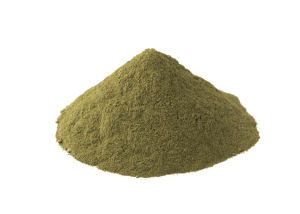What Is Speciofoline?
What Is Speciofoline?
An Understudied and Misunderstood Kratom Alkaloid
Kratom has long been a misunderstood plant product, shrouded in Eastern mystique and lacking significant research among Western medicine. But all of that is changing. Tens of millions of individuals around the world gravitating towards natural remedies, supplements and wellness products, kratom has earned a place in the spotlight.
In the USA alone more than an estimated 14 million adults use kratom regularly. This popularity has been a boon for the industry, but has also begun to shed light on just what makes kratom so special in the first place.
Although significant progress has been made studying mitragynine (MG) and 7-hydroxymitragynine (7-OH, two of the most abundant alkaloids present in kratom, lesser research has gone into other identified alkaloids.
In this guide, we highlight Speciofoline, a lesser understood but notably important alkaloid in kratom’s chemical composition.
What is Speciofoine?
Speciofoline is a naturally occurring alkaloid found in kratom. Plant alkaloids, such as Speciofoline, are small organic molecules found in various plants throughout the plant kingdom. They are typically produced as secondary metabolites made as a byproduct of the plant’s physiological functions. Around 20% of all plant species produce alkaloids, including the Mitragyna Speciosa tree, an evergreen native to Southeast Asia and from which kratom is made.
The majority of alkaloids are thought to be produced as a means of protection or defense, warding off both pathogens and herbivores in the wild. This, in part, explains kratom’s notably bitter taste, meant to deter herbivores from making a snack out of the tree’s leaves.
How Much Speciofoine is in Kratom?
Speciofoline is just one of 40 identified and isolated alkaloids in kratom. Although generally found in less than 1% of the total alkaloid concentration in the plant, recent research has revealed that the concentration of Speciofoine can vary by as much as 90-fold in nature.
This has led certain researchers to classify kratom into two distinctive sub-categories:
- High-speciofoline; and
- Low-speciofoline
This move is meant to help scientists (and potentially consumers) better understand the sometimes significantly varying effects between different strains of kratom.
Research published in the Journal of Scientific Reports, further confirmed the variability of alkaloid content in kratom, attributing its differing results when consumed to the wide spectrum of alkaloid profiles in consumed products.
To give some perspective, while levels of mitragynine and 7-hydroxymitragynine can vary by upwards of fourfold, levels of speciofoline varied by up to almost 23x that of MG and 7-OH.
The Potential Role of Speciofoline
Many plant alkaloids are pharmacologically significant, influencing physiological and biological processes and potentially treating a broad range of conditions. In fact, in modern medicine, between 25-75% of drugs utilize alkaloids (Khan, 2016b; Pervez et al., 2016) to exert their effect(s). This alone highlights the strong potential for alkaloids to be used as a therapeutic aid.
With regards to Speciofoine, it was found that the alkaloid did not exhibit an ‘appreciable’ affinity for or bind to the body’s natural opioid receptors (as does MG and 7-OH). These initial findings indicate that more research is necessary, and that speciofoline may exert effects by interacting with non-opioid receptors in the body.
Speciofoline’s History in Pharmaceuticals
Formerly Smith, Line and French, pharmaceutical giant GlaxoSmithKline previously applied for a patent on speciofoline in 1963. This patent was granted by the United States Patent and Trademark Office in 1967.
Arnold Heyworth Beckett, the noted inventor on the patent, and an esteemed pharmacist, had discovered what was noted as a ‘…new crystalline alkaloid…an orally effective analgetic and antitussive agent as shown by animal experimentation’. In other words, he claimed that animal studies on the alkaloid demonstrated its positive effect on relieving pain and suppression of coughing.
Oddly, and for reasons known only internally within GlaxoSmithKline, speciofoline never made it to market as a drug, and the patent subsequently expired in 1984, opening up the doors for its use in other applications and by other companies or individuals.
Speciofoline’s Influence on Cytochrome P450 Enzymes
Cytochrome P450 (or CYP for short), represents a class of protein enzymes that are intricately involved in both the synthesis and metabolism of cellular components, toxins and drugs within the body.
According to research published in the Journal of Scientific Reports (2020), inhibition of these enzymes can lead to an increased systemic exposure in the body to both botanical products as well as drugs or other medications an individual may be taking. In some instances, bolstering the effects or concentrations of these drugs or botanicals may be beneficial, in others, detrimental and even dangerous. This is why no one should ever use kratom while taking medications or other supplements, unless advised to do so by their doctor.
That said, speciofoline’s ability to inhibit P450 enzymes was found to be substantially lower than that of MG and 7-OH, potentially making kratom higher in this alkaloid a better option for some consumers.
NOTE: Of note is that the P450 enzyme class is responsible for the metabolism of 200 of the most commonly prescribed medications.
Speciofoline: an interesting and potentially beneficial alkaloid
Although more research is necessary, earlier studies on animal subjects have already demonstrated that this alkaloid has promise as both a pain reliever as well as a potential cough suppressant. Generally speaking, these two use cases often result in a product that has properties conducive to relaxation, sedation, calming and more. As such, future of kratom with higher concentrations of Speciofoline, or isolated speciofoline itself remains bright.
High Quality Lab-Tested Kratom
Interested in learning more about kratom? Shop our store and explore a wide selection of the industry’s best kratom powders and extracts. Sourced ethically from sustainable farms, and always tested for purity, our kratom powders stand a notch above the rest.

